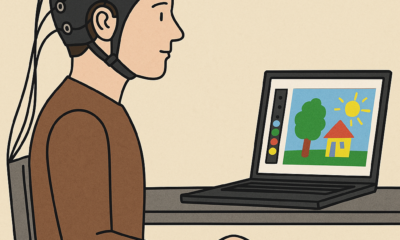Executive
Famine in Gaza? Its Food Supply Chain May Be Broken

World leaders are scrambling to respond to Iran’s continued aggression toward nations around the world, from Ukraine, through Israel, to Yemen. The Iranian dictators are the world’s number one state sponsors of terrorism, and are now overtly threatening to develop nuclear weapons while escalating the Israel-Hamas war into a global conflict.
Gaza people running short on food
But stopping a wider war requires acting on behalf of those already suffering from it. Several international aid groups are calling for increased attention to Gazans suffering from food shortages, with Oxfam International saying that Northern Gaza residents subsist on as little as 245 calories a day.
The 2.2 million residents of Gaza need food, but leaders shouldn’t jump to conclusions about who is at fault, as United Nations High Commissioner for Human Rights Volker Türk and top European Union diplomat Josep Borrell have done in blaming Israel. Understanding the real facts on the ground, from food availability to supply chain problems, is necessary to identify gaps and implement practical solutions.
Food gets into Gaza readily enough
The good news is that there is sufficient food made available to Gaza. Three-quarters of Gaza’s greenhouse acres were still available as late as Feb. 15, according to a United Nations Food and Agriculture Organization (FAO) report. And Israel, which was facilitating 150-200 daily truckloads of aid into Gaza since the start of the war, has recently accelerated food imports of up to more than 400 truckloads a day. It is also opening the Ashdod port and adding a new land crossing to increase the entry of goods and streamline security checks.
A truckload carries 20 tons of food; this means that 500 truckloads provide 10 million kilograms, about 4.5 kilograms per person in Gaza. This is double what the UN’s Food and Agriculture Organization estimates the average individual consumes in North America. Even under the most conservative estimates from UNWRA, half of the trucks reported by Israel provides about as much food for each Gazan as the average North American consumes.
Is the acceleration of Israel’s food supply only a recent reversal of an otherwise deficient policy, as the International Criminal Court may soon argue? Hardly: We recently demonstrated that since the start of the war, land supplies into Gaza – along with a continued local production of fruits, vegetables, and baked goods largely intact – are enough to feed the entire Gazan population.
But the food doesn’t get to the people!
But if there’s enough food available, why isn’t it reaching the Gazan population? There are several possibilities.
First, the simple chaos of war makes distribution exceedingly difficult. It is a mindboggling challenge to get aid to people in a major conflict zone. That has been compounded by a reported lack of distribution capacity within Gaza, where Israel and the UN are at loggerheads in light of 12 UN staffers taking part in the Oct. 7 massacres, and the UN turning a blind eye to the construction of a large Hamas data center underneath its Gaza City headquarters.
Second, Hamas may be continuing its decades-old habit of purloining food and disrupting distribution. Just this past weekend, Fatah-run Awdah TV – the official TV station of the Palestinian Authority – criticized Hamas for stealing aid and threatening aid providers. That’s on top of a Foundation for the Defense of Democracies report that Hamas has threatened to murder any Palestinian working with Israel to distribute international aid, and House Intelligence Committee Ranking Member Congressman Jim Himes telling CNN that Hamas should stop its “long history of stealing aid.”
Lastly, while regions like Northern Gaza may lack sufficient food access, there is no evidence for a territory-wide famine. Facts on this matter are frustratingly difficult to establish even by aid groups and the Israeli military, which is why it’s important to understand what’s really going on before fingers are unhelpfully pointed.
Cynical players
Hamas and its sponsor – the Iranian dictatorial regime – murder innocent Muslims and Jews and cynically exploit the suffering they cause to incite hatred, violence, and division across the world. Stopping these terrorists is important not only for global peace, but also so that the people of Gaza are safeguarded from further suffering – including by getting them the food they need.
This article was originally published by RealClearPolitics and made available via RealClearWire.
-

 Guest Columns4 days ago
Guest Columns4 days agoShe Saved Her Life. 7-Eleven Fired Her
-

 Civilization4 days ago
Civilization4 days agoDemocrats’ Viral Video Lights Match to the Republic
-

 Guest Columns4 days ago
Guest Columns4 days agoWaste of the Day: What’s Big, Grey And Costs $350K?
-

 Civilization3 days ago
Civilization3 days agoThe AI Challenge: Palantir, the Pope, and Paul Kingsnorth
-

 Civilization3 days ago
Civilization3 days agoNo Kings, No Queens, No Blind Loyalty
-

 Civilization2 days ago
Civilization2 days agoThe World Needs to Restore Balance and Objectivity on Climate
-

 Executive3 days ago
Executive3 days agoWaste of the Day: California’s $450 Million 911 Center Doesn’t Work
-

 Civilization2 days ago
Civilization2 days agoFree Speech Requires a Pious Commitment













